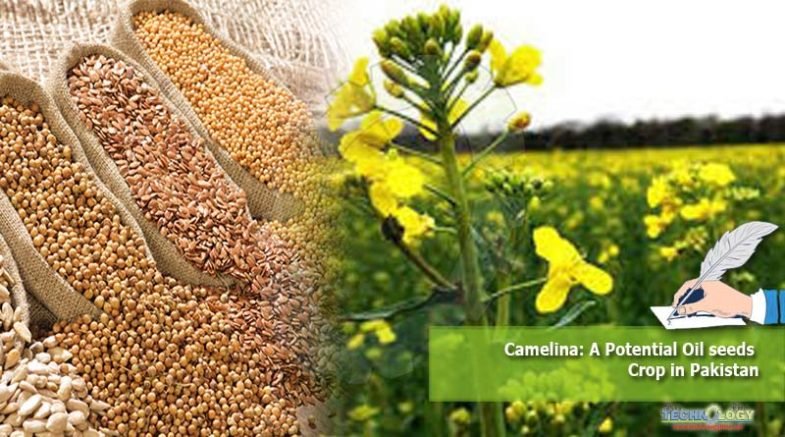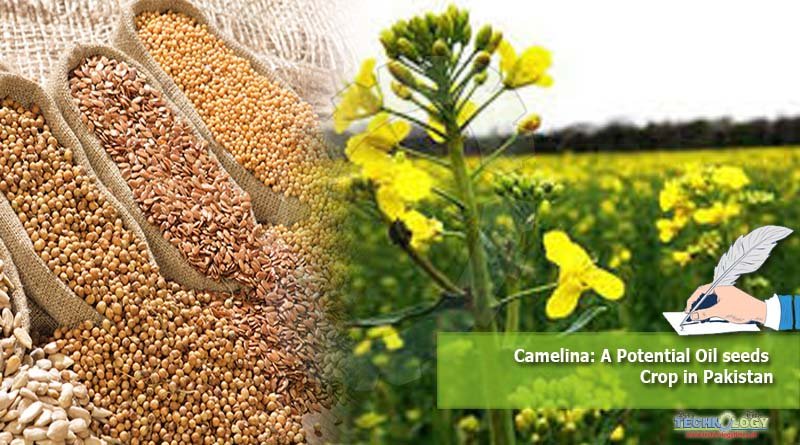Despite of other major crops such as wheat, maize, cotton, sugarcane; Pakistan is not self-sufficient in many sectors of Agriculture, one of them is oil seeds.
 The total area of Pakistan is about 76.1 million hectare out of which only 25% area is cultivated each year for crop production. Though Pakistan is an Agriculture Country and agriculture is said to be the dependent factor in the economy of the country but the area under the agriculture is decreasing day by day.
The total area of Pakistan is about 76.1 million hectare out of which only 25% area is cultivated each year for crop production. Though Pakistan is an Agriculture Country and agriculture is said to be the dependent factor in the economy of the country but the area under the agriculture is decreasing day by day.
This may be due to high population pressure or loss of productive soil to natural remedies like water logging and salinity, urbanization is another major cause for the decline of fertile lands in Pakistan.
Edible oil is Pakistan’s second largest import after gasoline and it’s still rising. Increase in population has also increased the demand of edible oil. We are spending over 100 billion rupees to import edible oil every year. This can be reduced by increasing the total cultivated area under oil seed crops or by increasing per unit yield. Usually, canola and mustard are grown as oil seeds in Pakistan followed by sunflower, safflower, and cotton. Camelina is another high potential crop which can be grown in plains of Punjab to increase oil productivity in Pakistan to minimize import of edible oil. Camelina seeds are used to extract oil that is rich in nutrition.
Camelina-Introduction & Origin
Camelina (Camelina sativa) is an herbaceous plant also known as false flex and gold of pleasure which belongs to brassicaceae family having yellowish flowers. It has branching stems while its seeds are formed in dehiscent siliques. Pant height ranges from 30-120 cm. It is an annual plant with duration of 3 months approximately.Camelina was originated in Europe and is being grown in European and North American countries as oil seed crop for centuries. It is estimated that it is at least 3000 years old crop that was being used as lamp oils and some other purposes. Camelina plant require temperate climate for its growth but currently this crop has gain importance in south Asian regions and is being grown on small area in Pakistan.
Camelina can be grown alongside the canola in zaid rabi or rabi seasons depending on weather conditions. Duration of crop is approximately 80 to 100 days with seed rate of 3 to 4 kilograms per acre so we can say roughly that it’s adjacent to canola as camelina also belongs to brassicaceae family. As far as the yield is concerned camelina crop seed yield ranges between 2500 to 2800 kg per acre.If we compare it with canola that is widely grown oil seed in Pakistan camelina has high oil efficiency than canola. Camelina seeds contain about 38% to 45% edible oil and the quality of this oil is much better than canola and raya.
It has low contents of erucic and linoleic acids and contain up to 45% of Omega-3 fatty acids which is essential for human nutrition. It also contains 27-32% proteins which make it perfect for human diet as it also contains trace amounts of antioxidants like topopherols and Vitamin-E. It has been noted it also shows resistance to oxidation and rancidity.
Uses:
Besides its use as edible oil extraction camelina crop has much more of its uses in industrial and domestic sides. Camelina seed oil can also be used as motor oil known as Bio-diesel. This bio diesel is being used as jet fuel for experimentation by United States Air Force as it would potentially decrease net carbon emission by 80% as compared to fossil fuels. For human diet its oil can replace fish liver oil for its contents as some vegetarians have their concerns about fish oil. Another large scale use of camelina is in animal and poultry feeds. Its stem is fibrous that can be used in making brushes of various kinds along with other fiber uses. Its oil is also being used in cosmetic products because of its anti-oxidation properties. Herbal medicine companies also use this oil in their products for various purposes.
Scope of Camelina in Pakistan:
With all this potential camelina is still considered as a special crop in Pakistan. Although area under its cultivation is increasing with time but still it is considered as very small area as compared to other oil seed crops in Pakistan. Camelina is an an emerging oil seed crop in Pakistan with very vast uses alongside the production of good quality edible oil. This crop has high potential to increase our local oil production along with its other byproducts but no proper lay out is there to for its improvement and betterment in Punjab. Camelina has bright future ahead in the betterment of farmers & foreign exchange of Pakistan.
Government should initiate research projects to check its credibility and provision of proper extension services to farmers like other oil seed crops. Subsidy should be given to the farmers with its good quality seeds as those are very rare in our local markets. So, for the interest of our country and to reduce drain on foreign exchange reserves, the need is to increase domestic oil production by increasing area under oil seed crops and introduction of new oil seed crops having high potential. Just imagine a crop with all these benefits and capacity in the development of future of oil seeds in Pakistan. With proper attention it could give a lot one can imagine!
Authors: Wajeeh Ur Rehman1, Dr. Zubair Aslam1, Mamoona Jamil2, Ali Ahmad1, Muhammad Sajjad1, Sami Ur Rehman1, Waqas Sajjad1, Mehwish Nadeem3
1 Departmentof Agronomy, University of Agriculture, Faisalabad
2 CABB, University of Agriculture, Faisalabad
3 Departmentof Botany, University of Agriculture, Faisalabad
